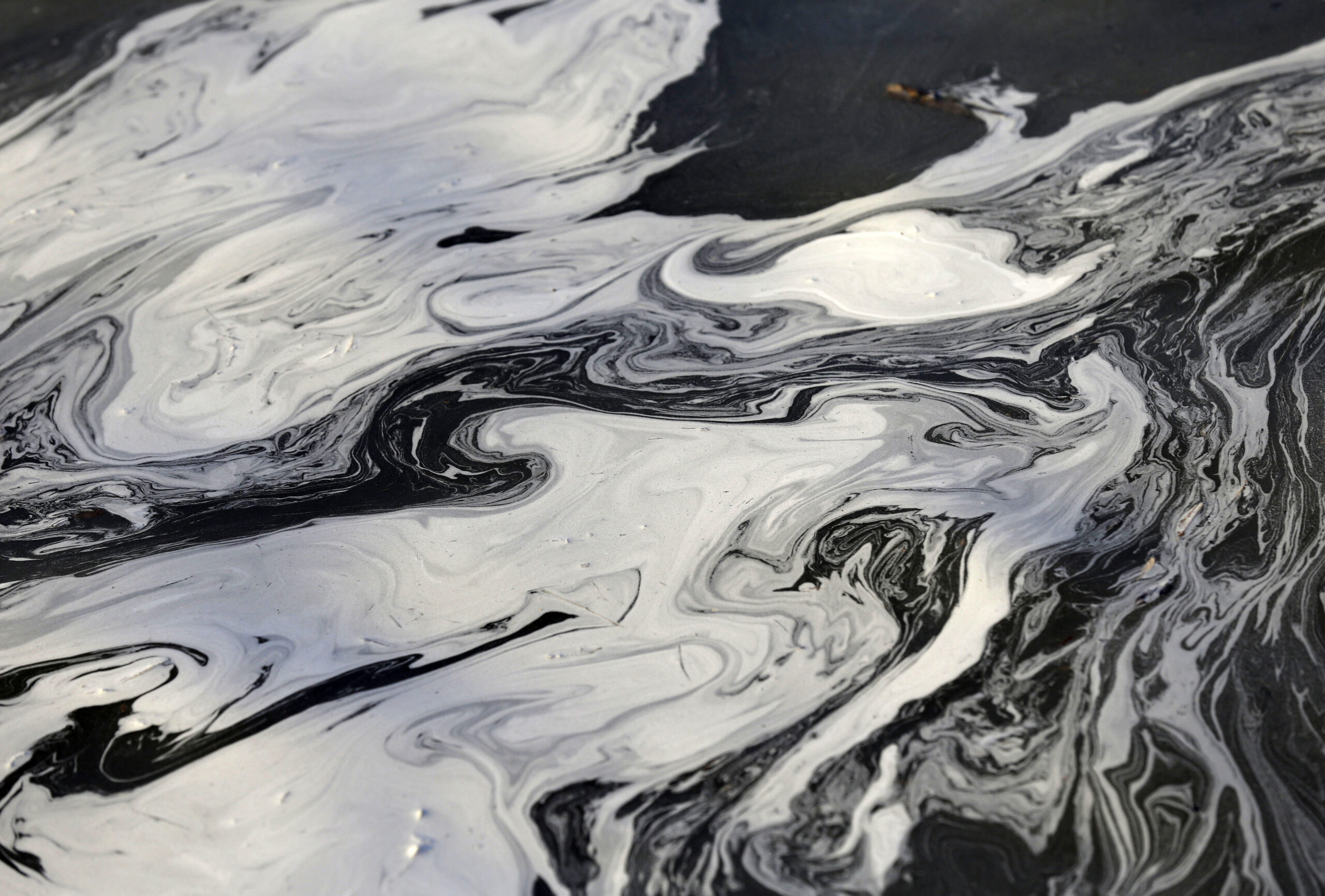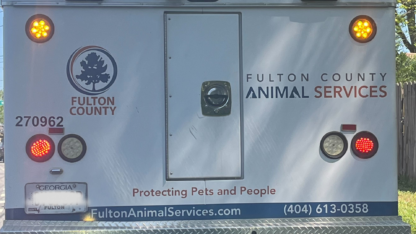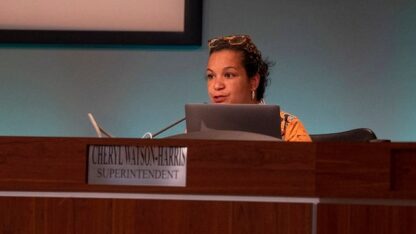As The End Of Their Ga. Season Nears, Concerns About North Atlantic Right Whales Grow
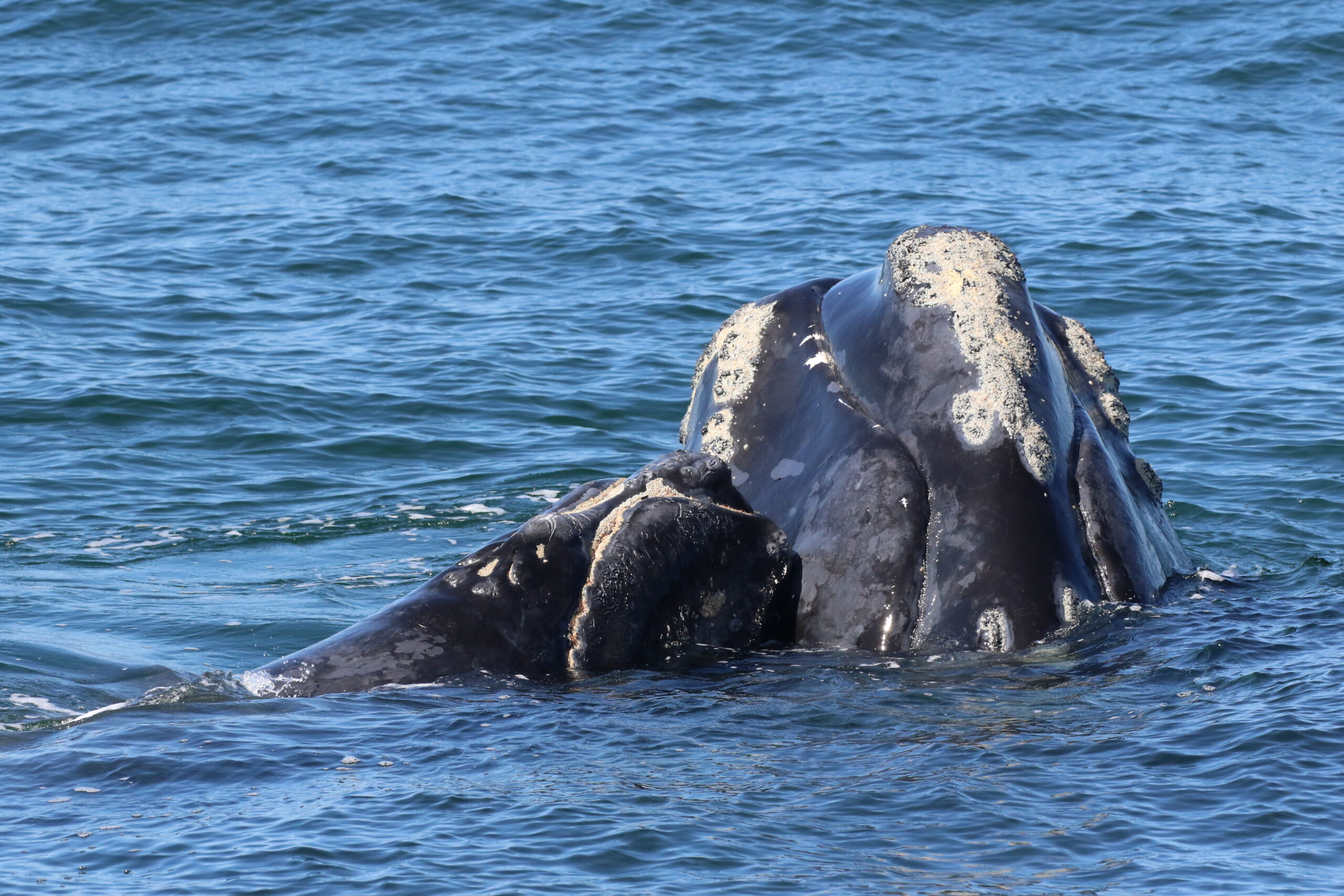
North Atlantic right whale #3020 “Giza” and calf are shown off Cumberland Island coast. According to the state Department of Natural Resources, this is Giza’s third documented calf, just over a month old. The white marks on Giza’s left lip are from a previous unobserved entanglement.
Georgia DNR, NOAA permit #20556
This has been a better winter than other recent ones for North Atlantic right whales.
The rare giants, dubbed Georgia’s official marine mammal, have their calves off the Georgia coast.
As this year’s calving season winds down, the number of new whales born is higher than it was in past years. But the future for the whales is still uncertain.
The worst calving year for North Atlantic right whales since researchers started counting was three years ago. In the winter of 2017-18, there were no calves at all.
Since then, the numbers have crept back up.
Monitors searching from planes and boats have spotted 16 North Atlantic right whale calves so far this winter off the coasts of Georgia and North Florida, though one of those calves was later hit and killed by a fishing boat in Florida.
Ship strikes are just one of the human-caused risks the whales face. They also get tangled in heavy gear used for lobster and snow crab fishing.
And their summer habits are changing.
They typically spend the warmer months off the coast of New England, but they have been traveling farther north into Canadian waters looking for food, possibly as a response to changing ocean temperatures caused by climate change.
“Since 2010, the number of whales has been declining, and the concerning thing is they’re declining at a much faster rate than they were growing previously,” said wildlife biologist Clay George, who coordinates Georgia’s marine mammal program at the state Department of Natural Resources.
Now, about a century after commercial hunting for North Atlantic right whales was banned, experts estimate there are only about 375 of the animals living. Fewer than 100 of those are breeding females.
Battling Back After Whaling
The animals are called right whales because they were seen as the right whales to hunt.
“Because they’re slow and live close to shore, they were kind of easy targets for the early whalers,” George said. “This species has been targeted going back 400 years, and by the turn of the 20th century, we think there were probably only about 100 left.”
The whales were protected in the 1930s, and since then, their numbers have slowly increased.
But now that growth has stopped.
Since 2017, nearly 50 have either been found dead, or were seen alive, but were seriously injured, and unlikely to breed again.
The National Oceanic and Atmospheric Administration declared an “unusual mortality event” four years ago, and the federal government is working on regulations to better protect the whales.
Disagreement On How To Help
“The whale is at a critical point,” said Alice Miller Keyes, vice president of coastal conservation at the Georgia environmental group 100 Miles.
Now her group and a few others are launching an “eat local seafood” campaign in Georgia. They’re encouraging people not to buy lobster or snow crab from New England and Canada, out of concern about the risks those fisheries pose to the whales.
“We don’t want people to purchase lobster and snow crab until we have confidence that those industries are using whale safe practices and technologies,” she said.
More than 80% of right whales have gotten tangled in fishing gear at some point in their lives, according to a study by the New England Aquarium. Heavy ropes attaching snow crab and lobster traps to each other, or to buoys, are especially problematic.
Keyes said according to NOAA, more than 90% of the vertical ropes in the Atlantic are attached to lobster gear in New England.
But U.S. lobster industry officials said what’s happening to the whales isn’t their fault.
“I think we all agree right whales are in very dire straits. We all care very deeply about that,” said Patrice McCarron, executive director of the Maine Lobstermen’s Association. “What we’d really like to see is to have whales stop dying in Canada and having us be blamed for it. It’s very frustrating.”
McCarron said Maine lobstermen have reduced how much rope they have in the water.
In Massachusetts, areas are closed to lobster fishing at times when whales are in the area.
“Our fishermen are doing their part,” said Massachusetts Lobstermen’s Association director Beth Casoni.
The National Oceanic and Atmospheric Administration is working on additional regulations that would do more to decrease the amount of rope in the water and require rope to be weaker, close more areas to fishing and require fishermen to mark the gear with different colors depending on what state they’re in.
On a call with federal officials last month, Maine lobstermen pushed back, saying the new rules could put them out of business and threaten the economies of small fishing New England communities.
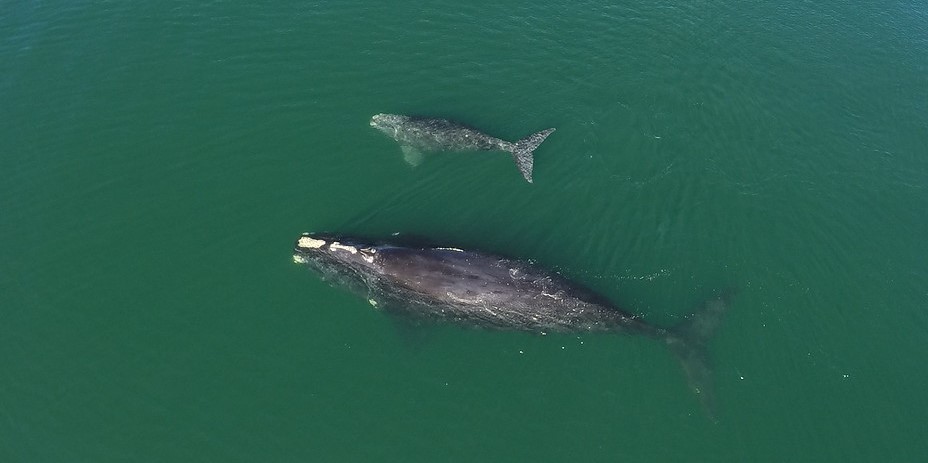
Environmental groups, and also Georgia officials, have also pushed back on the federal proposals — from the other side — saying they won’t do enough to save the species.
While there’s research into ropeless fishing technologies, a solution that’s supported by environmental groups, the lobstermen say the change would be too expensive and too difficult to switch to on a large scale.
‘Kind Of A Miracle’
George said he believes if people can stop killing the whales, their population could rebound.
“It’s kind of a miracle that they’re still around. There were just so few of them left, and they kind of battled back,” he said.
George spends much of the winter working on North Atlantic right whales, monitoring the population, collecting genetic samples from calves and trying to free entangled whales from fishing gear.
He said earlier this month, he saw a mother whale with a calf near the Port of Charleston.
“At the same time that they’re sitting there in the water, and this calf’s playing around on its mom’s back, you can look out in front and there’s half a dozen ships going back and forth and small recreational boats zooming into the entrance late in the day,” he said.
He said he figured the pair were beginning their migration north, past 1,000 miles of ships going back and forth, and fishing gear in the water.
And, he said, he just hoped the best for them.

